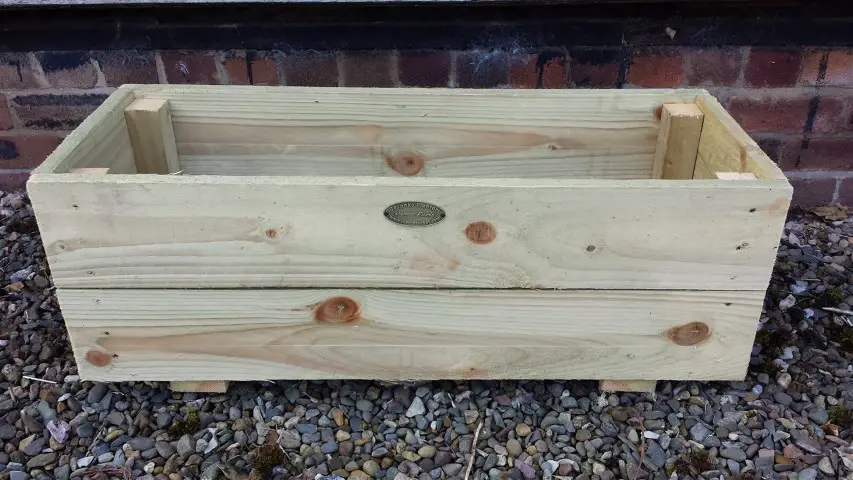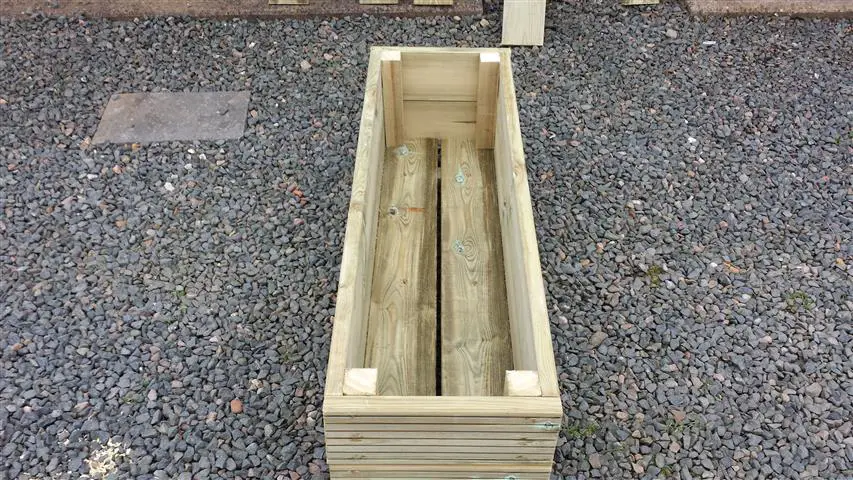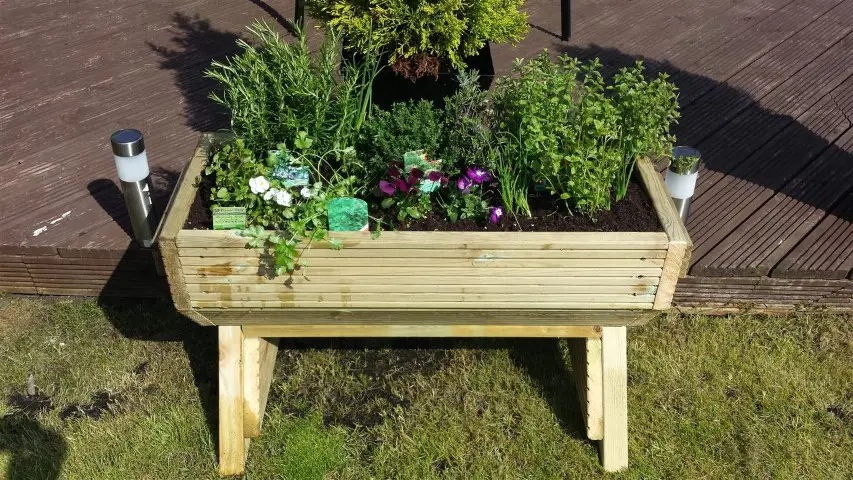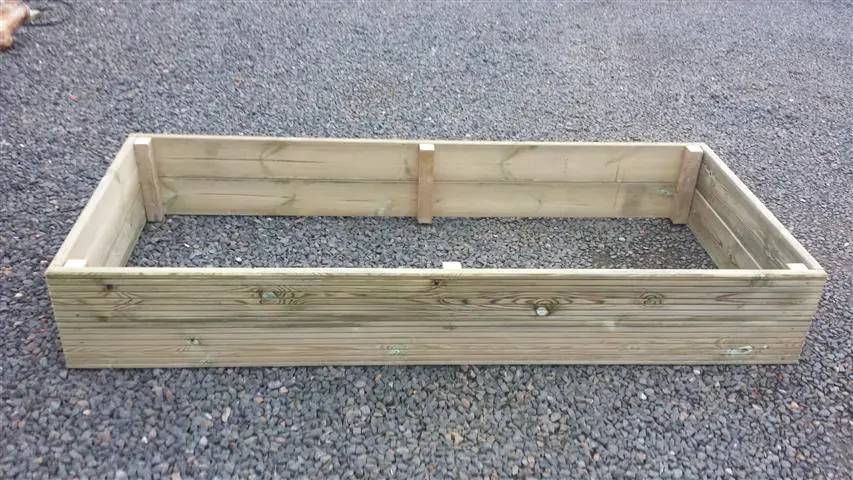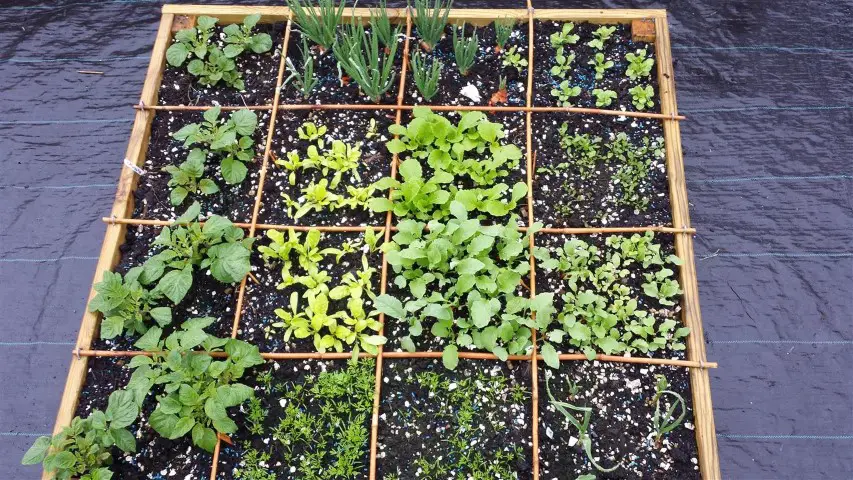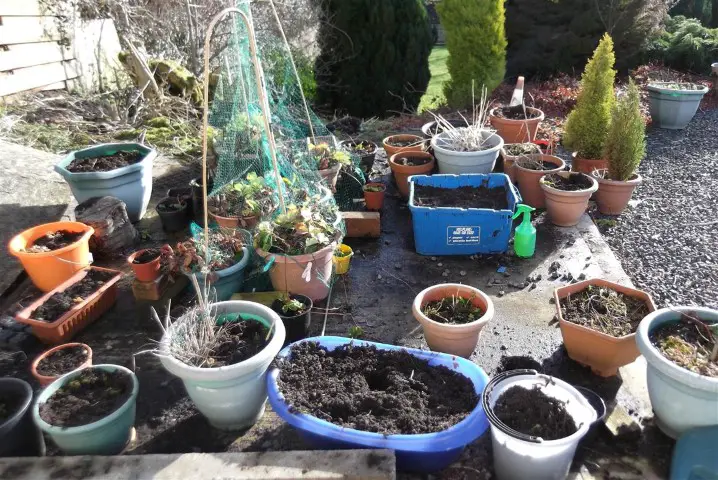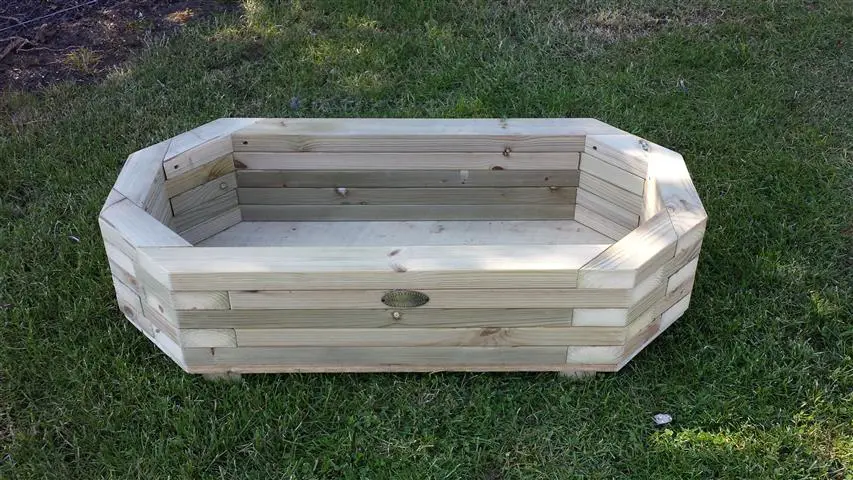Making your own planters for growing vegetables is not difficult at all for anyone who has just the basic DIY skills – or who is willing to learn some!
In this article I will show a number of different planter designs that range from the ridiculously easy, to some that may require just a bit more patience and woodworking skill such as the cradle planter, which admittedly is not so easy for the beginner.
Vegetable planters can be made from many kinds of material including wood, concrete, brick or metal, but they all serve the same purpose – to create an adequate space to grow the particular vegetable or other plant you have in mind.
The ‘look’ of the planter if you like is secondary to its main purpose in most (not all) cases. However there is really no need to create an ugly looking planter – unless that’s what you’re looking for!
With all that said there are five main kinds of planter that will suit most if not all vegetable plants, and indeed growing methods that you may choose.
Trough planters: These come in many shapes and sizes but mainly rectangular or square shaped and deep enough to accommodate most vegetables. They are usually free-standing with a built-in base.
The trough planter in the image above was made with 6 inch x 3/4 inch rough sawn timbers. 4 – 2×2 posts hold the corners and the base is made with 2 lengths of the same material as the sides with the addition of 2 straps secured to keep it raised from the ground.
I generally use 2 1/2 inch decking screws to fix it all my planters together.
Raised Beds: Raised bed planters can be very basic and simply form 4 sides that surround a growing area. They are typically between 6 – 24 inches deep, but mostly just high enough to form a barrier within which to grow vegetable crops.
Raised beds can be made free-standing as in the one in this image, or can simply be formed around an area set aside for the vegetable patch.
Square Foot Gardens: These are raised beds that are made to form a square 4 foot by 4 foot, and sectioned into 1 foot square so that you have 16 squares in all.
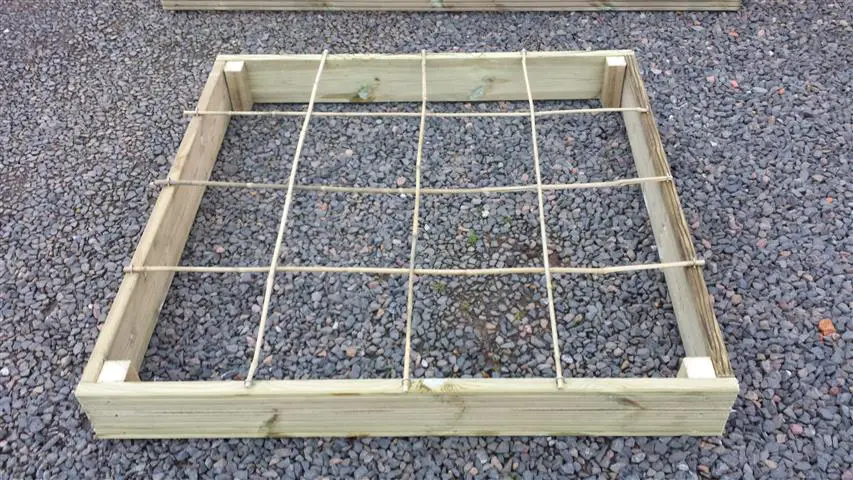
A square foot garden is typically made like the frame above and can form an area with several frames each sectioned into 16 squares. The method of vegetable garden is discussed more in this article on Square Foot Gardening.
Vertical Planters: These are planters attached to a framework or backdrop of some kind that have planter boxes attached. This method is especially suited for the ‘physically challenged’ as the vegetables are usually at a height that means there is little to no bending down required.
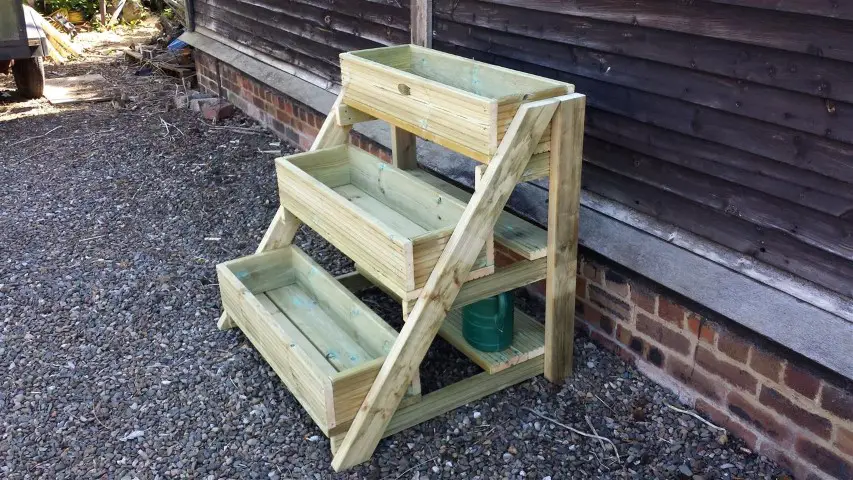
Container gardens: This covers a vast array of materials from pots to discarded wheelbarrows! Container gardening is particularly suited to folks who want to plant vegetables in pots on the patio or paved garden area.
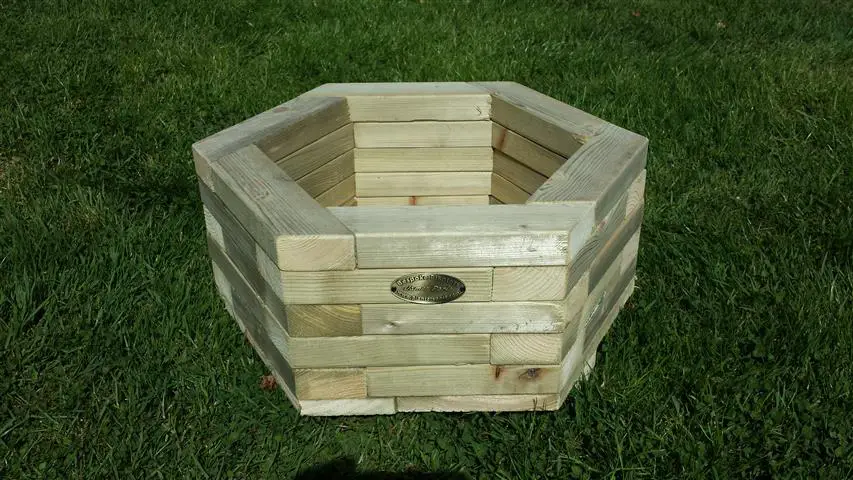
When it comes to containers to grow vegetables, let your imagination run wild and you will be surprised at what you can grow veg and especially herbs in!
Should you treat wooden planters
This is a question that seems to trouble many folks, owing mainly to the potential of the treatment contaminating the plants. The fact is that even timber that is not treated at all will give you around 4-5 years use.
However if you use factory pressure treated timber for horticultural use, then there is no reason to fear regarding contamination as it will not leak into the soil.
Also since 2003 when chromated copper arsenate begun to be phased out, modern pressure treatment methods have been adapted for the DIY market that are safe to use. More on this here .
.
Hand treated timber is a different story though and care should be taken that you are not using a potentially toxic treatment. Instructions on the tin should tell you if it is safe for horticultural use.
Best soil to use in planters
First of all it has to be said that garden soil alone is no use for planters! It is simply too dense and depending on the quality of soil, it will compact and leave little room for plant roots to establish themselves properly.
Instead a mix of compost, vermiculite and good quality topsoil is ideal for planters and raised bed gardens.
This mix – roughly a third of each, is ideal as it will not compact down in the planter. It will also remain friable and crumbly with plenty of drainage, and room for the roots to establish themselves.

